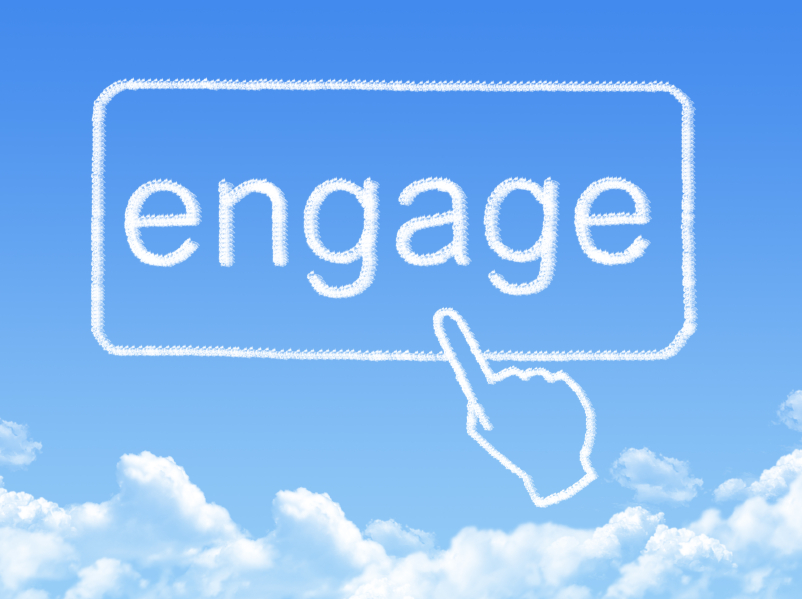Between a global pandemic, a widespread social justice movement, and a hotly contested presidential election, little about last year was easy.

One silver lining is that companies were compelled to prioritize how they best support employees through this difficult time. The happy hours and on-site dining that workers relished a short year ago are now irrelevant, as kitchen tables became offices.
In this new realigned landscape, many workers will continue to work from home for months—and some may never come back to the office. Consider that PwC found three-quarters of office workers moved to remote work during the pandemic, and 74% would like to continue working remotely at least 2 days a week post-pandemic. This means businesses must fundamentally rethink how to engage their employees in this long-term remote and hybrid work environment.
In 2021, it’s time to redefine employee engagement in light of what truly matters to employees. I’ve been fortunate to work with dozens of enterprises to engage their employees in this new and changing reality. Over the course of my conversations—and amid the data—several trends have emerged that will define this year and beyond. The key to redefining engagement lies in four key pillars: insights, wellness, personalization, and purpose.
Insights
A stellar employee experience starts with employee listening—having a pulse on what is actually happening within your organization and what’s top of mind for your employees at all times. This is key to a successful business and engaged employees. Before COVID-19, leaders could have in-person conversations and do desk drive-bys to get a sense of their teams’ status, but with widespread working from home, it’s now harder to engage in low-stress, everyday interactions to gauge how your employees are feeling.
Pulse surveys are a start and can provide HR leaders with meaningful data, but it’s also vital to go beyond and assemble other, more subtle feedback mechanisms. Passive engagement can be an invaluable indicator as to how your employees are truly feeling.
For example, how many employees participate in all-hands video calls? Are your employees taking full advantage of their benefits like 401(k)s and wellness programs? If not, what are the barriers to doing so? These insights can help build a behavior-based—and more realistic—portrait of engagement that’s in tune with our current times.
Look for more experimentation as companies seek new and creative ways to listen and glean employee insights from data and online behavioral trends rather than direct observation.
Wellness
The pandemic has changed how employees view their overall wellness and put a premium on what benefits matter most. With so much uncertainty around jobs and finances over the past year, employees report benefits like financial wellness have become a top priority—even above health care and time off.
In this new era of employee engagement, it’s less about keeping your people in the office and more about going back to basics: enabling people to create long-term wealth and gain financial security while supporting initiatives that advance all aspects of health.
HR leaders are listening, and many have already started moving away from office perks in favor of employee well-being programs. Embracing benefits for the new era of wellness—from mental to financial—will play a critical role in redefining employee engagement in 2021.
Personalized with a Human Touch
One of the many advantages stemming from a dispersed workforce is employers’ ability to better personalize employee engagement. No longer do companies have to design events and options for the “great average” of everyone in the same office.
Instead, everything from virtual team meals to feedback sessions can (and should) be customized for the unique and personal preferences of the individual. Something as seemingly small as allowing employees to expense their choice of lunch for virtual group meetings can go a long way to show your employees you care about them as individuals.
Online personalization also offers an opportunity to recreate some human connection that we’ve lost with remote work. We’re all Zoomed out. Now is the time for companies to reinvent how we connect with humanity in an age of nonstop video calls and limited physical gatherings.
Small group meetings with leadership or small employee hobby-based groups can help employees connect on a more personal level, allowing them to be more authentic with peers and leadership alike (and vice versa).
Purpose
With the challenges we faced in the past year and an increased focus on work/life blend come big questions about meaning, mission, and purpose. Companies that draw a clear connection between their day-to day-operations and a bigger societal goal have a clear advantage in keeping employees engaged, even in these challenging times.
Survey after survey confirms that the new generation of workers seeks purpose, and a study from LinkedIn and Imperative found that purpose-oriented employees are more satisfied with their jobs and more likely to stay at their current company longer. In our mostly remote work future, giving employees purpose will be key to a happy and engaged workforce.
In 2021, flexibility at work will be not just normal but also a necessity for companies to hire and retain the best talent. Along with this flexibility comes the need to redefine employee engagement.
By gaining insights through employee listening, focusing on wellness, personalizing the employee experience, and giving employees purpose, companies and employees alike can put the trials of 2020 behind and move forward toward a brighter future.
Marthin De Beer is the founder and CEO of BrightPlan. Prior to BrightPlan, De Beer was a Senior Vice President at Cisco Systems where he led multiple businesses from idea to over $1 billion in revenue. In his last position, he was responsible for Cisco’s video and collaboration portfolio that generated over $9 billion of annual revenue. One of De Beer’s life goals is to inspire and guide people to achieve their life and financial goals.
